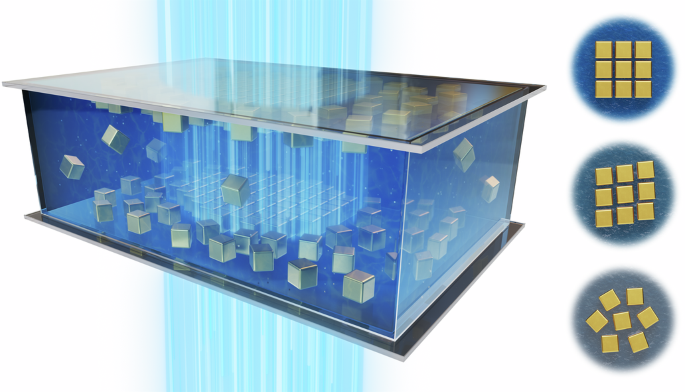2024-08-19 ミシガン大学
<関連情報>
- https://news.umich.edu/morphable-materials-researchers-coax-nanoparticles-to-reconfigure-themselves/
- https://www.nature.com/articles/s44286-024-00102-9
ナノキューブ自己組織化経路のエンジニアリングと直接イメージング Engineering and direct imaging of nanocube self-assembly pathways
Yaxu Zhong,Timothy C. Moore,Tobias Dwyer,Alex Butrum-Griffith,Vincent R. Allen,Jun Chen,Yi Wang,Fanrui Cheng,Sharon C. Glotzer & Xingchen Ye
Nature Chemical Engineering Published:06 August 2024
DOI:https://doi.org/10.1038/s44286-024-00102-9

Abstract
Nanoparticle self-assembly offers a scalable and versatile means to fabricate next-generation materials. The prevalence of metastable and nonequilibrium states during the assembly process makes the final structure and function directly dependent upon formation pathways. However, it remains challenging to steer the assembly pathway of a nanoparticle system toward multiple superstructures while visualizing in situ. Here we use liquid-cell transmission electron microscopy to image complete self-assembly processes of gold nanocubes, a model shape-anisotropic nanocolloidal system, into distinct superlattices. Theoretical analysis and molecular dynamics simulations indicate that the electrostatic screening of the medium dictates self-assembly pathways by its effects on the interactions between nanocubes. We leverage this understanding to demonstrate on-the-fly control of assembly behavior through rapid solvent exchange. Our joint experiment–simulation–theory investigation paves the way for elucidating the relationships among building block attributes, assembly pathways and superstructures in nanoscale assembly and opens new avenues for the bottom-up design of reconfigurable and adaptive metamaterials.



